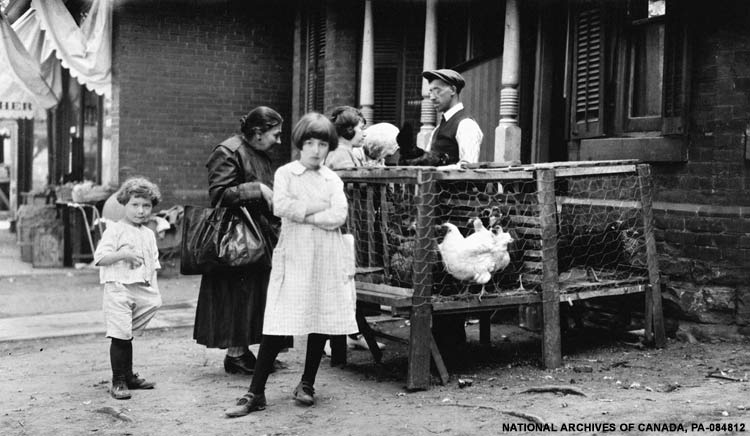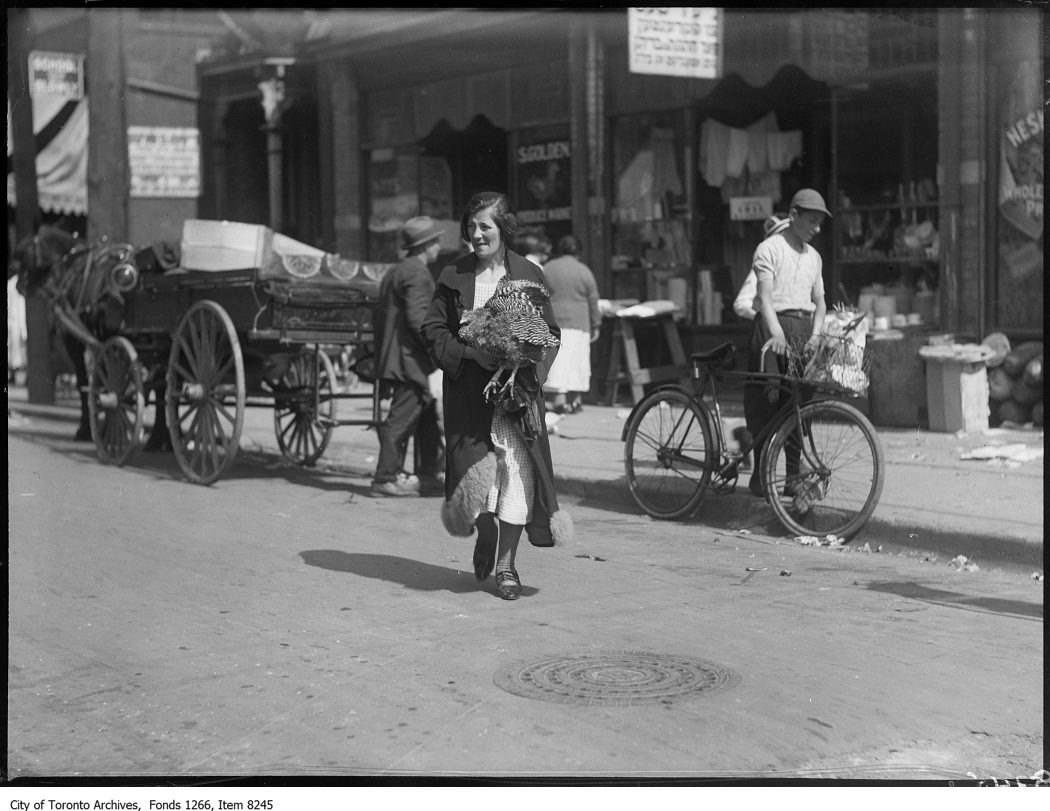By the time Stuart Clarfield was born in 1963, Toronto’s Jewish community had largely migrated from downtown to the city’s northern suburbs.
Still, Clarfield was raised on stories of Kensington Market, the neighbourhood southwest of College Street and Spadina Avenue.
This was where his great-grandfather first arrived from Poland around 1910 and began to build a life, as well as where Clarfield’s mother was born.
“I’d always heard living in the market described as this mythological experience,” Clarfield said.
A filmmaker for the past 25 years, Clarfield has decided to capture the neighbourhood’s vibrant history and evolving landscape in a documentary called Kensington Market: The First 150 Years.
The film, which Clarfield is producing and directing through his Toronto documentary company, The Mission Media Company Inc., will chronicle the stories of the diverse communities that have made the market their home for nearly two centuries.
It will also examine the current forces of urban development poised to have an impact on the neighbourhood’s future.
Mission Media is in the process of gathering public support for the project through a crowdfunding campaign on the online platform Indiegogo. Donate here.
With an initial fundraising goal of $12,000, they’re seeking to raise money for the first phase of production, and are also soliciting people’s personal stories about the market through an ongoing social media campaign.
“The market has often been a home to people who weren’t welcome elsewhere,” Clarfield said, noting that the film will trace the area’s development from the early 19th century to the present.
In 1815, British landowner George Taylor Denison purchased the undeveloped land encompassing what is now Kensington Market.
In the 1850s, the Denison estate was subdivided and parcelled into individual plots, and by the 1880s, houses were being built there for Irish and Scottish immigrant labourers settling in Toronto.

In the early 20th century, Kensington was flooded with Jewish immigrants fleeing eastern Europe, and the area, then one of the city’s poorer neighbourhoods, became known for its densely packed houses and what was known as the “Jewish Market,” where Jewish merchants sold goods and worked largely as tailors, furriers and bakers.
By the 1920s and ’30s, Kensington Market and its surrounding area were home to roughly 60,000 Jews and about 30 synagogues.
Clarfield’s great-grandfather was one of the founders of one of the area’s now defunct shuls: having come from Ostrovia, Poland, he helped to establish the Ostrovtzer Congregation, the site of which is now the Cecil Street Community Centre.
Clarfield said the film, which he hopes can one day be used as a teaching resource in Jewish day schools, will give Jewish children the chance to “see the early stages of the community and experience that missing link to their grandparents or great-grandparents.” He plans to work with the Ontario Jewish Archives to collect more historical information about Jewish Kensington.
After World War II, much of the Jewish population moved north, and in the 1950s, Portuguese immigrants from the Azores region began settling in the market, as well as waves of Caribbean and East Asian immigrants.
In the 1960s, many residents of Chinatown, then centred along Dundas Street between University Avenue and Bay Street, were evicted by the city for development purposes and relocated in and around the market.
READ: ARE YOU JEWISH ENOUGH FOR THE TORONTO JEWISH FILM FESTIVAL? YES
Nowadays, Clarfield said, the market is home to dozens of vintage stores and artisan and specialty “foodie” shops and restaurants, as well as a growing marijuana industry.
In addition to featuring stories from the market’s past and present inhabitants, Clarfield said the film will focus on city planning consultations that are underway, and proposed developments.
“As rents go up, real estate value changes, and the monolith condo industry continues to grow… We’re asking, What is the market going to be?… As filmmakers, we’re not here to advocate one position over another, but to make people conscious of what’s happening.”
The film is slated for release in the fall of 2016 or the spring of 2017.
People can share personal stories of the market at [email protected].
